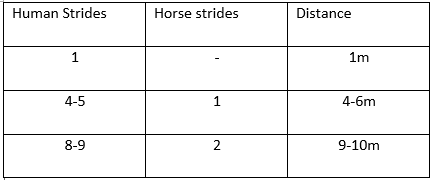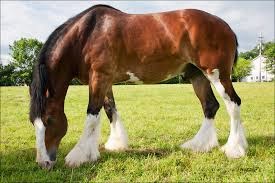I feel as if Pondie and I are improving in not rushing at jumps! Yes! If you are suffering from your horse(s) running at jumps, read on!
Tips-
-Wear gloves
1- I started off with doing a 20 meter circle in canter after warming up well, my not-so-strong-side is my right rein, so I did one circle on my right rein, then my left rein and so on for another 4 times. When you feel that
you are strong on both reins, it's time for transitions!
Firstly, you will have to go wide and do a nice, big trot and every 10 or so strides or every second letter, you will halt. Simple? Halting can be easy but there are some things that I will tell you that will help your halting. Usually, before you halt, you will forewarn your horse that you are going to do so, but you also have to know how to suddenly halt, in different situations you will have to use a sudden halt, especially if your horse takes off or is uneasy, in a dressage test, to tell your horse your in charge and (in this case) for training. Some points you will have to know when halting, especially when doing this training, you will have to have your heels down (as always) and your legs forward, lean back and pull the reins. You may find the first few times hard as your horse isn't used to stopping from a canter and maybe so aren't you. So do halts using those tips a few times in a circle in a canter until you are confident and it seems easier to halt.
2-Now for jumping! set up a small cross-rail jump and get into an even, but slow trot. I put the jump between V and E, the next thing you have to do, if you feel your horse is speeding up before the jump, just stop like the first exercise.
The next step is to stop (halt) at the curve before the jump and stay for a few seconds, then continue onto a trot, once again stop, right in front of E, even at E and wait for a few seconds and continue over the jump, and don't let your horse canter! If he does, HALT and continue. Do this for a long time until when you are trotting past the markers that you stopped at earlier, your horse should slow down without being told anything but remember to reward your horse when he slows down and don't stop 'tweaking' (pull and releasing) your reins when your horse is in a faster trot.
Now try in a canter. Of course you don't have to yet, but it must be done! If you still want to keep it at a trot, that's fine but the next step is canter.
Do one or two 20 meter circles in canter, this time keep it nice and slow, like how you would like you horse to approach the fence. After you have done that, start at a nice trot around (or over) the jump slowly then ask for a canter at B. Your horse may not slow down at E like it did in trot so halt before E and at E, then ask for another canter. You don't want to do this too much as your horse will learn to 'explode' at the jumps, but keep of pulling and releasing your reins, halting and if your horse keeps on running at the jumps in a canter, don't be scared to pull away from the jump, it's better then him catapulting you out of the saddle!
Stay horsey,
~Livinia:)























